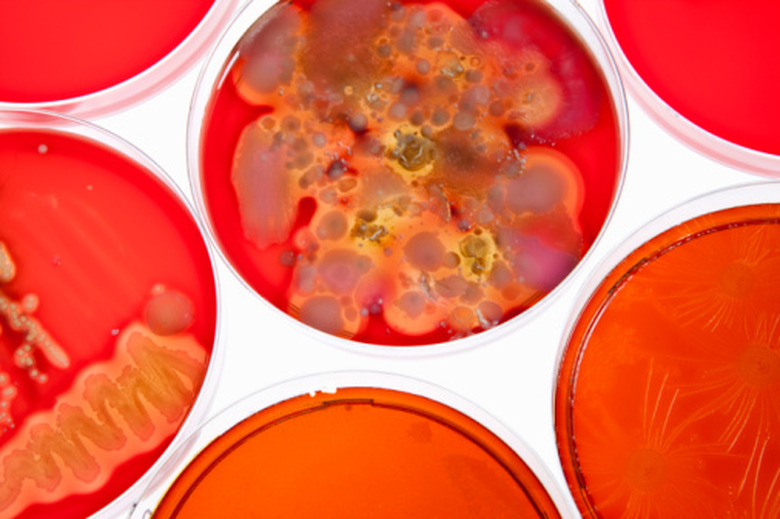How Are Bacteria & Plant Cells Alike?
Since all forms of life on Earth share a common ancestor, they all are related. Consequently, many forms of life share some intriguing similarities. While, for example, plants and bacteria are very different, they are also similar in some ways.
Features
Features
The most striking similarity between bacteria and plants is the universality of the genetic code. Genes in DNA are like coded recipes, in which each triplet of letters specifies a particular amino acid. With a few exceptions, the same triplets specify the same amino acids in bacteria and all other known organisms. With a few exceptions, all known organisms use the same 20 amino acids to form proteins. Although amino acids may exist in "right-handed" or "left-handed" versions, the amino acids used in proteins are all "left-handed."
Cell Walls
Cell Walls
Plant cells and bacteria alike have cell walls, strong flexible layers surrounding their cell membranes that help to counteract osmotic pressure so the cell does not burst as water diffuses into it.
Considerations
Considerations
The cell walls in bacteria and plants have a similar function, but they are made from different materials. Plant cell walls are primarily cellulose, while bacterial cell walls are formed from peptidoglycans.
References
- "Genetics: A Conceptual Approach"; Benjamin A. Pierce; 2006.
Cite This Article
MLA
Brennan, John. "How Are Bacteria & Plant Cells Alike?" sciencing.com, https://www.sciencing.com/how-are-bacteria-plant-cells-alike-12401277/. 21 July 2017.
APA
Brennan, John. (2017, July 21). How Are Bacteria & Plant Cells Alike?. sciencing.com. Retrieved from https://www.sciencing.com/how-are-bacteria-plant-cells-alike-12401277/
Chicago
Brennan, John. How Are Bacteria & Plant Cells Alike? last modified August 30, 2022. https://www.sciencing.com/how-are-bacteria-plant-cells-alike-12401277/
